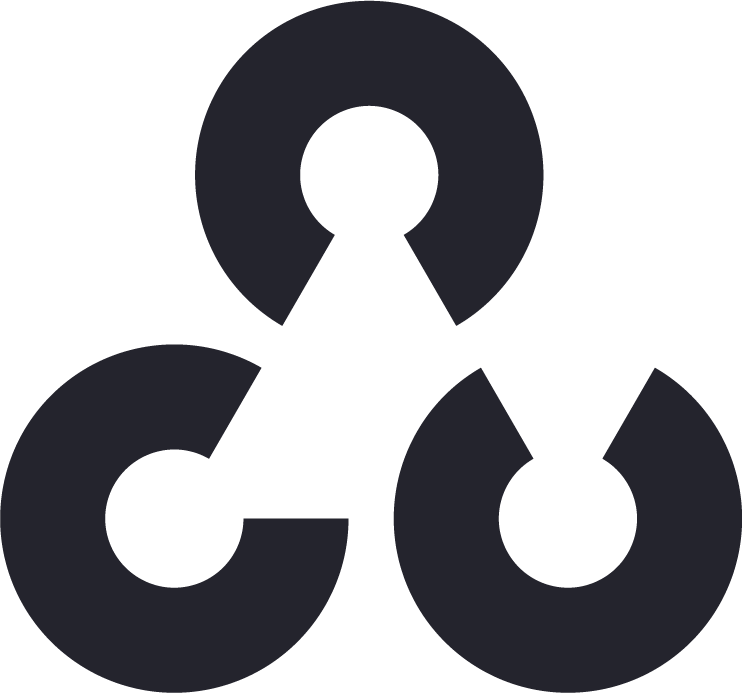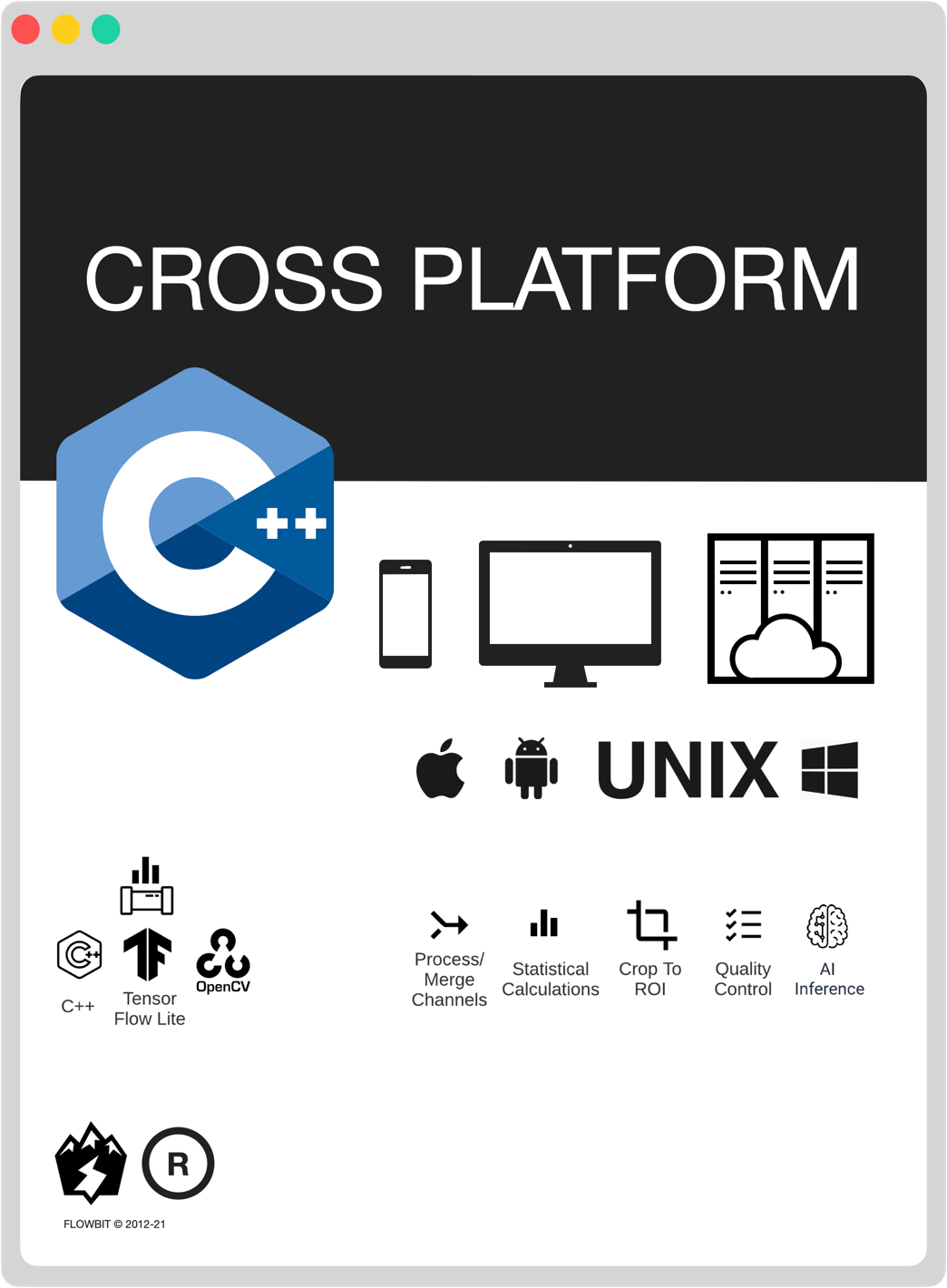CREDIT: Boids Artificial Life Program, Craig Reynolds 1986
// PLATFORM OVERVIEW
arrow_upward arrow_downwardAI/ML SERVICES
Tech Platforms
AI/ML Design & Development
Audio & Image Processing
Machine Learning
CROSS PLATFORM Performance Consistency
FDA Regulatory Frameworks
Enterprise Production
OVERVIEW
With the rise of technology and computing power in smartphones, personal desktop computers, and cloud-based services, complex Algorithms, Artificial Intelligence (AI) and Machine Learning (ML) have moved rapidly from the realm of theory into actual products with widespread use. Flowbit understands our clients’ interest in the application of these technologies in medical science and engineering. We bring together ideas, techniques, and processes from disparate research papers, journal articles, and books and offer a multi-discipline-based systematic engineering approach.
FLOWBIT® utilizes state of the art technology for developing algorithms in AI and ML. These de facto platforms and libraries include:

 ______
______TENSORFLOW
TensorFlow is an open source software platform consisting of tools, libraries, and community resources for developing and deploying machine learning algorithms. This platform works well with projects requiring access to a significant volume of data. Using this platform, Flowbit can help you build state-of-the-art, scalable and cross-platform machine learning algorithms.

 ______
______OPENCV
OpenCV — which stands for Open Source Computer Vision Library — provides a large collection of computer vision algorithms, ranging from simple image processing to more complex object detections. These extremely useful algorithms are frequently utilized in combination with our data processing solutions.

 ______
______KERAS
Keras is an Application Programming Interface (API), developed in Python for TensorFlow. It allows for ease in developing and training models in Python by offering a consistent and simple API, pre-built functions for common use cases, descriptive logs, and actionable messages.
// DESIGN & DEVELOPMENT
arrow_upward
DIVIDE & CONQUER
AI/ML
DESIGN & DEVELOPMENT
Flowbit understands that to solve complex healthcare problems, we require many algorithms to work in concert together. As such, we design our systems so that solving complex problems does not result in complex dependencies and algorithms. We do so by ensuring our design is modular and broken down into smaller easy-to-understand processing steps. We also provide you with visibility into how the overall algorithm is performing, and how it transforms your data— thereby avoiding a black box approach to developing AI. To demonstrate this approach, we have provided our step-by-step approach to performing analysis on Audio and Image processing below.
WAVEFORM SIGNAL DATA
AUDIO & IMAGE PROCESSING
Using various numerical methods and software libraries, we can help you analyze signal data by performing conversions from raw sensor formats, followed by quality control steps that smooth out noise, determine and apply thresholds, and detect edges and regions of interest. These steps usually occur before the data is fed into another algorithm for processing.

SENSOR DATA
A variety of data formats are collected from all kinds of sensors— for example, camera sensors, oximeter sensors, and temperature sensors. We collect the bytes of information and combine them in the right order, so that the correct picture starts to emerge.

 "CL Society 409: Child in a ceremony" by francisco_osorio is licensed with CC BY 2.0.
"CL Society 409: Child in a ceremony" by francisco_osorio is licensed with CC BY 2.0.
NORMALIZE
Depending upon the data processing needs, some data values may need to be normalized, merged, or scaled. This can help with the detection of regions in the data that would otherwise be missed.

FEATURE DETECTION
A variety of edge detection algorithms can be applied with learned parameters. This helps us get the desired contours for feature detection.

FILTER OUT
Once all the edges are detected, we can simply filter out the edges we don't want by applying simple threshold or adaptive filters.

REGION OF INTEREST
Using computer vision, we finally detect the bounding box of the object and therefore, the data in the region of interest that we can further utilize in our analysis.
NEURAL NETWORKS
MACHINE LEARNING
Using machine learning we can provide accurate diagnosis and predict health conditions. Flowbit will help you design the right model architecture for your use case and data— employing various modeling techniques including Perceptrons, Convolution, Recurrent, or Long/Short Term Memory Neural Networks.
In the following example, we have two sets of audio data of heart sounds collected from a digital stethoscope, i.e., normal and abnormal heart sounds. An AI model can be trained via supervised learning to infer normal or abnormal heart sounds using this dataset. Essentially, the audio data is converted from the temporal domain to a frequency domain, so that a normalized frequency power analysis algorithm can be applied. Using these pre-processed data frame sets, an AI model can be trained to distinguish normal from abnormal heart sounds even when the differences are subtle.

NORMAL HEART SOUNDS
ABNORMAL HEART SOUNDS
// TECHNICAL & QUALITY MANAGEMENT
arrow_upward
BEYOND CODING
CROSS PLATFORM
CONSISTENCY
When it comes to Verified and Validated Algorithms for AI/ML, as well as preprocessing steps, we run the same code on iOS and Android to give you consistent results on the two different platforms. We aim to reduce any variation in results between the Cloud and mobile platforms you use, by utilizing Tensorflow converters and their openly available conversion techniques.
Underneath the hood, we utilize C/C++ programming language exclusively for executing algorithms that perform pre-processing of data and inferring of results. The C/C++ code base we design and develop is reusable and cross-compiled for iOS, Mac OS, MS Windows and Unix-based operating systems. This eliminates programming differences. In addition, C/C++ almost always gives us faster execution times, as there is less overhead and fewer intermediate layers of instruction processing between the code and hardware it runs on.
FDA
REGULATORY FRAMEWORKS
While U.S. FDA SaMD device reviews were not traditionally designed for adaptive Algorithms for Artificial Intelligence/Machine Learning (AI/ML), the FDA provides guidance including April 2019 discussion paper, “Proposed Regulatory Framework for Modifications to Artificial Intelligence/Machine Learning-Based Software as a Medical Device” As well as January 2021, the FDA released an AI/ML Action Plan based on this discussion paper.
We have deep expertise in planning and executing verification and validation testing that meets the FDA’s traditional regulatory framework for SaMD. In addition, we work within the new Proposed Regulatory Frameworks by FDA that are under consideration for adoption, such as Algorithm Change Protocol (ACP) in the context of the Total Product Lifecycle (TPL). These and other measures help the FDA to establish reasonable trust of assurance on safety and effectiveness of the medical device, while embracing the iterative improvement power of AI and ML.

AI/ML TPL: KEY NEW ELEMENTS
a. Culture of quality and organization excellence
b. Premarket assurance of safety and effectiveness
c. Review of SaMD pre-specifications and ACP
d. Real-world performance monitoring
e. Data acquisition for retraining
ENTERPRISE
PRODUCTION
A robust AI/ML-engineered enterprise solution must contain a host of activities that include Machine Learning Development practices, in addition to Modern Software Development practices that still apply.
Thanks to some great AI/ML platforms, such as TensorFlow, CoreML, MATLAB, and PyTorch the actual machine learning code development is only but a small fraction of the effort involved in developing the AI/ML system.
The products we develop are deployed in the real world of constant change. This fact in combination with FDA guidance on real world monitoring makes it imperative that we have the necessary tooling and capability to log performance and detect issues early with our products.
Careful planning, tooling, and design can help you avoid hidden costs that may undermine the success of your AI/ML based project.
LEARN MORE
about our approach to algorithms, computer vision, waveform analysis, machine learning engineering best practices as well as anti-patterns. Leave us a question or comment.
CONTACT US 




 "CL Society 409: Child in a ceremony" by francisco_osorio is licensed with CC BY 2.0.
"CL Society 409: Child in a ceremony" by francisco_osorio is licensed with CC BY 2.0.




















